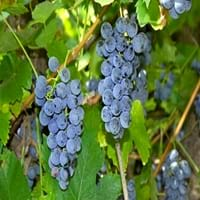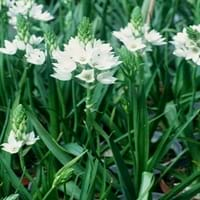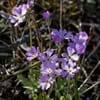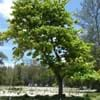Life Span
Perennial
Perennial
Type
Fruit
Bulb or Corm or Tuber
Origin
Northeastern United States, Mid-Atlantic United States, Southeastern United States, North-Central United States, Central United States, South-Central United States, Canada
Southern Africa, South Africa
Types
Not Available
not available
Habitat
meadows, Roadsides, Sandy areas, Terrestrial
marshes, Sandy flats, Slopes
USDA Hardiness Zone
3-9
7-10
Sunset Zone
1a, 1b, 2a, 2b, 3a, 3b, 4, 5, 6, 7, 8, 9, 14, 15, 16, 17, 18, 19, 20, 21, 22, 23, 24
21,22
Habit
Vining/Climbing
Clump-Forming
Minimum Width
Not Available
Flower Color
White
Orange, Gold
Flower Color Modifier
Bicolor
Bicolor
Fruit Color
Red
Not Available
Leaf Color in Spring
Green, Dark Green
Green, Blue Green, Yellow green
Leaf Color in Summer
Dark Green
Light Green
Leaf Color in Fall
Orange, Gold, Bronze
Several shades of Green
Leaf Color in Winter
Light Green
Light Green
Leaf Shape
Oval Cordate
Succulent
Plant Season
Spring, Summer, Fall
Spring, Winter
Sunlight
Full Sun, Partial Sun
Full Sun, Partial Sun, Partial shade
Growth Rate
Fast
Not Available
Type of Soil
Clay, Loam, Sand
Clay, Loam, Sand
The pH of Soil
Acidic, Neutral, Alkaline
Acidic, Neutral, Alkaline
Soil Drainage
Well drained
Well drained
Bloom Time
Late Spring, Early Summer, Summer
Early Spring, Spring, Winter, Late Winter
Tolerances
Drought
Drought
Where to Plant?
Container, Ground
Container, Ground
How to Plant?
Seedlings, Stem Planting
Bulbs, Seedlings
Plant Maintenance
Medium
Medium
Watering Requirements
Do Not over Water, Do not water frequently, Keep the ground moist but not water-logged, Requires a lot of watering, Requires watering in the growing season
Keep ground moist, Reduce watering in winter, Water three times weekly in summer
In Summer
Lots of watering
Lots of watering
In Spring
Moderate
Moderate
In Winter
Average Water
Average Water
Soil pH
Acidic, Neutral, Alkaline
Acidic, Neutral, Alkaline
Soil Type
Clay, Loam, Sand
Clay, Loam, Sand
Soil Drainage Capacity
Well drained
Well drained
Sun Exposure
Full Sun, Partial Sun
Full Sun, Partial Sun, Partial shade
Pruning
Remove damaged leaves, Remove dead branches, Remove dead leaves
Prune to control growth, prune to control shape, Prune to stimulate growth
Fertilizers
All-Purpose Liquid Fertilizer, Fertilize every year, Nitrogen
All-Purpose Liquid Fertilizer
Pests and Diseases
Red blotch
Not Available
Plant Tolerance
Drought
Drought
Flowers
Insignificant
Showy
Flower Petal Number
Single
Single
Foliage Texture
Coarse
Medium
Foliage Sheen
Glossy
Glossy
Attracts
Moths
Butterflies, Insects, pollinators
Allergy
Slows blood clotting
Skin irritation, Skin rash, Toxic
Aesthetic Uses
Not Used For Aesthetic Purpose
Beautification, Cut Flowers, Showy Purposes, Used as an interior landscaping species, Used for decorating walls, fences, gates, hedges, etc.
Beauty Benefits
Improve skin condition
Not Available
Environmental Uses
Air purification
Air purification
Medicinal Uses
constipation, Diarrhea, Eye Problems, Heart problems, High blood pressure, High cholestrol, Liver problems, Metabolic disorders
Not Available
Part of Plant Used
Fruits, Leaves
Flowers
Other Uses
Used As Food
Beneficial species for attracting pollinators, Showy Purposes, Used as Ornamental plant, Used for Landscaping
Used As Indoor Plant
No
Yes
Used As Outdoor Plant
Yes
Yes
Garden Design
Edible, Fruit / Fruit Tree, Vine
Container, Cutflower, Mixed Border, Rock Garden / Wall
Botanical Name
VITIS labrusca 'Catawba'
Ornithogalum thyrsoides
Common Name
Catawba Grape, Fox Grape
Chincherinchee, Wonder-flower, Star-of-Bethlehem
In Hindi
Catawba अंगूर
Chincherinchee
In German
Catawba Traube
Kap-Milchstern
In French
Catawba raisin
Chincherinchee
In Spanish
Catawba uva
Chincherinchee
In Greek
Catawba Σταφύλι
Ornithogalum thyrsoides
In Portuguese
Catawba Grape
Chinkerinchee
In Polish
Catawba winogron
Chincherinchee,
In Latin
Uva Catawba
Chincherinchee
Phylum
Anthophyta
Magnoliophyta
Class
Magnoliopsida
Liliopsida
Order
Vitales
Asparagales
Family
Vitaceae
Asparagaceae
Clade
Angiosperms, Eudicots, Rosids
Angiosperms, Monocots
Tribe
Not Available
Ornithogaleae
Subfamily
Vitoideae
Scilloideae
Importance of Catawba Grape and Chincherinchee
Want to have the most appropriate plant for your garden? You might want to know the importance of Catawba Grape and Chincherinchee. Basically, these two plants vary in many aspects. Compare Catawba Grape and Chincherinchee as they differ in many characteristics such as their life, care, benefits, facts, etc. Every gardener must at least have the slightest clue about the plants he wants to plant in his garden. Compare their benefits, which differ in many ways like facts and uses. The medicinal use of Catawba Grape is constipation, Diarrhea, Eye Problems, Heart problems, High blood pressure, High cholestrol, Liver problems and Metabolic disorders whereas of Chincherinchee is Not Available. Catawba Grape has beauty benefits as follows: Improve skin condition while Chincherinchee has beauty benefits as follows: Improve skin condition.
Compare Facts of Catawba Grape vs Chincherinchee
How to choose the best garden plant for your garden depending upon its facts? Here garden plant comparison will help you to solve this query. Compare the facts of Catawba Grape vs Chincherinchee and know which one to choose. As garden plants have benefits and other uses, allergy is also a major drawback of plants for some people. Allergic reactions of Catawba Grape are Slows blood clotting whereas of Chincherinchee have Skin irritation, Skin rash and Toxic respectively. Having a fruit bearing plant in your garden can be a plus point of your garden. Catawba Grape has showy fruits and Chincherinchee has no showy fruits. Also Catawba Grape is not flowering and Chincherinchee is not flowering . You can compare Catawba Grape and Chincherinchee facts and facts of other plants too.





